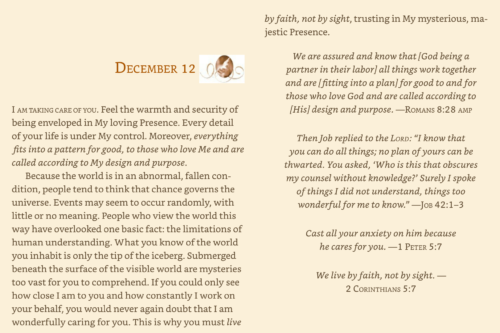Loving Mother of the Americas
“Listen. Put it into your heart, my youngest and dearest son, that the thing that frightened you, the thing that afflicted you is nothing: Do not let it disturb you. . . . Am I not here, I, who am your mother? Are you not under my shadow and protection? Am I not the source of your joy? Are you not in the hollow of my mantle, in the crossing of my arms? Do you need something more?” —Our Lady of Guadalupe to Juan Diego, 1513, Nican Mopohua
One of the images of Mary that continues to inspire devotion throughout the Americas is Our Lady of Guadalupe, whose feast we celebrate today. In this passage, CAC friend and author Mirabai Starr writes about the transformation that Our Lady of Guadalupe brought to Mexico and the world:
Our Lady of Guadalupe appeared to the Indian Juan Diego [1474–1548] only a few short years after Hernán Cortés conquered Mexico for Spain. The conquistadors had initially presented themselves as friends. The Aztecs believed that Cortés was Quetzalcoatl, the divine savior figure who, legend had promised, would return one day when they needed him most, and so they welcomed him and his entourage with joy. Once the Spaniards had insinuated themselves among the indigenous people, however, they proceeded to destroy them. In a concerted act of genocide and enslavement, the conquistadors swiftly eradicated an ancient culture. . . .
Into this bloody mix of violent cultures, Our Lady of Guadalupe extended the hand of mercy, comfort, and protection. . . . She drew everyone—European and indigenous—under her blanket of love. . . .
Images of Our Lady of Guadalupe are found throughout Mexico, Central and South America, and the southwestern United States. . . . Roadside grottos every few miles hold her image nestled in rock and concrete, a tall glass candle perpetually burning at her feet. She is emblazoned on tee shirts and tattooed onto biceps. She is borrowed to advertise taxi companies and hardware stores, women’s circles and bikers’ gangs. . . . She extends her unconditional love to all who reach for her merciful hand—believers and atheists, Latinos and Anglos, women and men—and they love her back, with equal intensity.
In a world struggling against senseless violence and growing economic disparity, Our Lady of Guadalupe offers a distinctly feminine antidote to the poisons of poverty and war. Where society demands competition, Guadalupe teaches cooperation. In place of consumerism, she models compassionate service. She is not the whitewashed Virgin of the institutional Church. She is the radical, powerful, engaged Mother of the People.
Our Lady is not merely a sociopolitical symbol, however. People of all faiths call her Mother. In times of deeply personal grief, they turn to her for comfort. They turn to her for insight. They turn to her for a reminder of what matters most, what endures when all else seems to be lost, what grace may yet be available when we meet fear with love.
Full-Body Knowing
I will give you a new heart and put a new spirit in you; I will remove from you your heart of stone and give you a heart of flesh. —Ezekiel 36:26
Jesus is our model for what it means to live from our hearts. Father Richard teaches:
In Jesus, God gave us a human heart we could love. While God can be described as a moral force, as consciousness, and as high vibrational energy, the truth is, we don’t fall in love with abstractions. So God became a person “that we could hear, see with our eyes, look at, and touch with our hands” (1 John 1:1).
Love—God incarnate—always begins with particulars: this woman, this dog, this beetle, this Moses, this Virgin Mary, this Jesus of Nazareth. It is the individual and the concrete that opens the heart space to an I-Thou encounter. Without it, there is no true devotion or faith but only argumentative theories.
This is the simple religious knowing that the West is going to have to rediscover, both on the Right and on the Left. It’s always a whole-body knowing. Since the Enlightenment and argumentative Reformation we have situated our “knowing” in the mind, illustrated by Descartes’ notorious “I think therefore I am.” The mind is good but it’s only a part of what Jesus recommended: “You must love the Lord your God with your whole heart, with your whole soul, and with your whole mind” (see Matthew 22:37). That’s full-body knowing! That is devotion.
Love lives and thrives in the heart space. It has kept me from wanting to hurt people who have hurt me. It keeps me every day from obsessive, repetitive, or compulsive head games. It can make the difference between being happy and being miserable and negative. Could this be what we are really doing when we say we are praying for someone? Yes, we are holding them in our heart space. Do this in an almost physical sense, and you will see how calmly and quickly it works.
We invite you to pray for the ability to be more loving with modern mystic Howard Thurman (1900–1981):
I want to be more loving in my heart! It is often easy to have the idea in mind, the plan to be more loving. To see it with my mind and give assent to the thought of being loving—this is crystal clear. But I want to be more loving in my heart! I must feel like loving; I must ease the tension in my heart that ejects the sharp barb, the stinging word. I want to be more loving in my heart that, with unconscious awareness and deliberate intent, I shall be a kind, a gracious human being. Thus, those who walk the way with me may find it easier to love, to be gracious because of the Love of God which is increasingly expressed in my living. “I want to be more loving in my heart!” [1]
